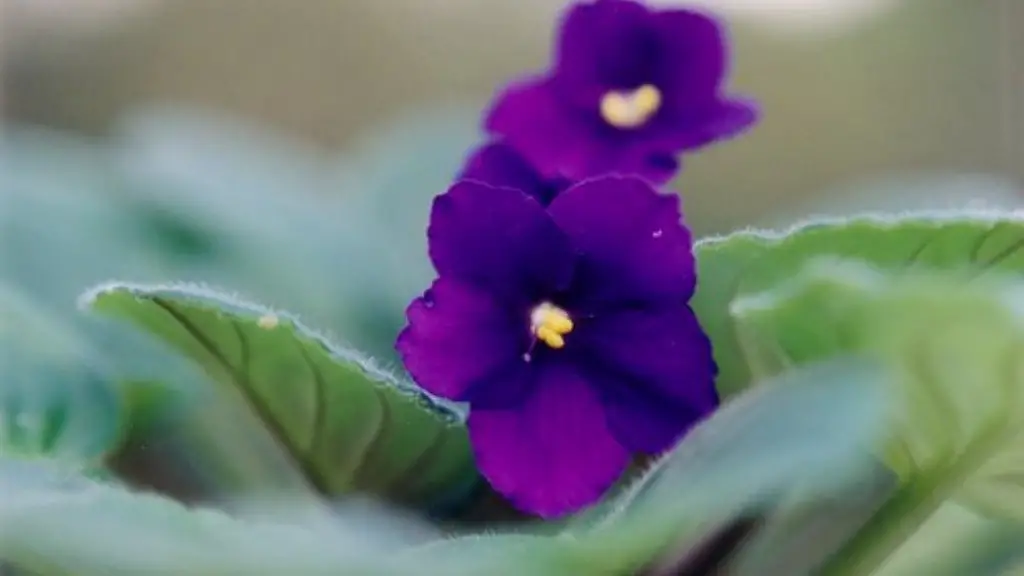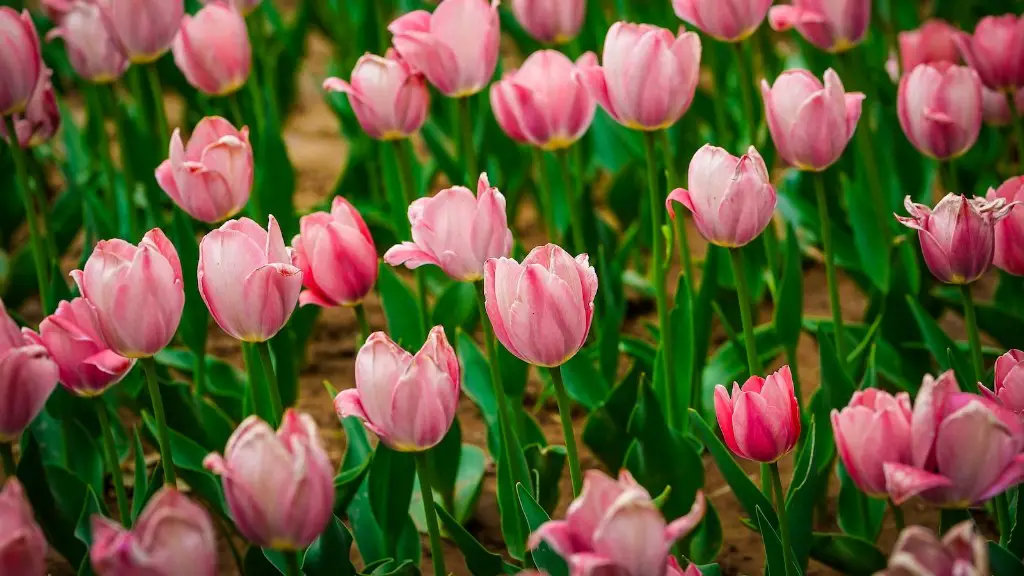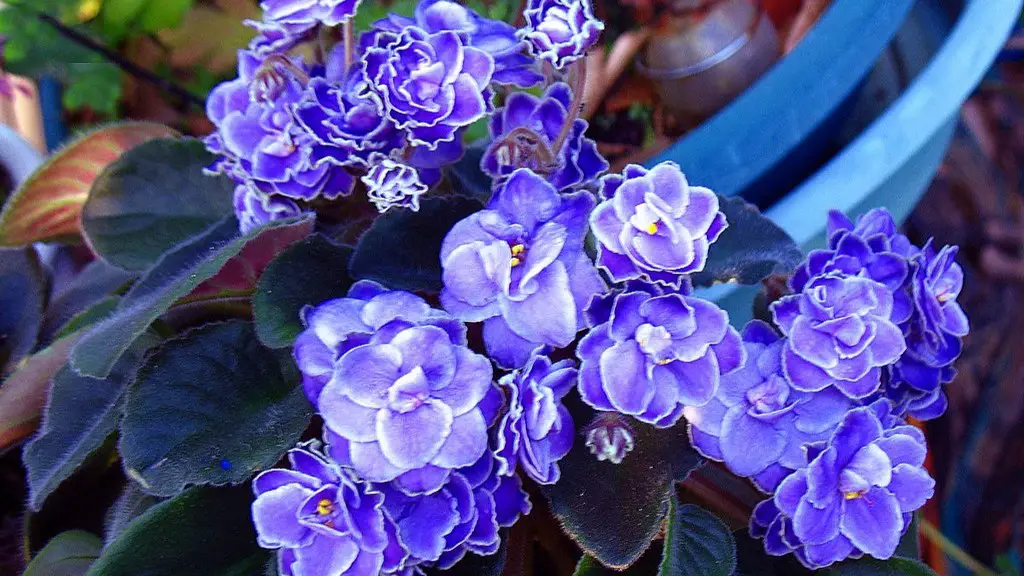African violets are one of the most popular houseplants, and for good reason! They are relatively easy to care for, and they come in a wide variety of colors and shapes. If you are thinking about adding an African violet to your indoor garden, here are a few tips to get you started.
To start growing indoor African violets, you will need:
-African violet plants
-Potting soil
-Pots or containers
-Water
1. Choose a pot or container that is big enough for your African violet plant to grow in. Fill the pot or container with potting soil.
2. Place the African violet plant in the pot or container. Gently pat down the soil around the plant.
3. Water the African violet plant.
4. Place the pot or container in a bright spot, but out of direct sunlight.
5. Continue to water the African violet plant as needed.
How do you grow African violets indoors?
African violets are delicate plants that need to be protected from direct sunlight. Keep them away from bright south- or west-facing windows, and provide them with an east- or north-facing window for the best lighting. Artificial lighting can also work well for these plants.
If you’re looking to root African violets, the good news is that it’s easy to do! The quickest and easiest way I’ve found to root them is in water using a leaf. You can take the leaf from your existing African violets, or even from a friend’s plant. Simply place the leaf in a glass of water and wait for it to develop roots. Once it has roots, you can transplant it into soil and it will continue to grow!
Where should I put African violets in my house
African violets need bright, indirect light in order to thrive. A spot near an east- or north-facing window is often a good option. Avoid placing them in direct sunlight, as this can scorch the leaves. If you don’t have a suitable window, you can place them under a fluorescent light fixture with two 40-watt tubes.
African violets need a special soil mix in order to thrive. Conventional potting mix is too dense for these sensitive plants, and they require a lightweight, soilless planting medium that provides support without crushing or choking their delicate root systems.
What is the secret to growing African violets?
If you want your plants to have the best color and blooms, grow them in bright, indirect light. A plant stand three feet away from a west- or south-facing window is an ideal location. Plants will still grow when situated right beside north- or east-facing windows, but leaves will be thin and spindly, and plants less likely to bloom.
It is best to water African violets from the bottom. This allows the water to go directly to the roots where it is needed most. It is important not to use cold water; lukewarm or warm is preferred. If you water from the top, be careful not to get water on the leaves when the plant is in the sun; this is to avoid leaf spots.
Do African violets like to be misted?
When watering your African violet, be sure not to mist the foliage as this can cause permanent leaf spotting. Use water that is room temperature and avoid saturating the crown of the plant (the section of the plant at soil level) as this can lead to crown rot.
Coffee grounds are slightly acidic and contain nitrogen, which helps plants grow healthy foliage. Occasionally sprinkling used coffee grounds on top of your African violet potting soil can be good for the plant.
Can you use tap water for African violets
If you have African violets, it’s important to be aware of the quality of your tap water. In most cases, tap water is fine, but the chlorine levels can vary depending on the season. In some areas, tap water may have high levels of chlorine, chloramines, or dissolved solids, which can all adversely affect your African violets.
A wicking system is a great way to make sure your African violets are never over watered. By only water once a week and allowing the plant to completely dry between waterings, you can be sure that your plants will stay healthy and happy.
Why do African violets need special pots?
This African violet pot has a hole in the bottom that allows water to drain out, preventing the roots from sitting in water and getting rot.
African violets are long-lived plants, capable of surviving for up to 50 years with proper care. A key part of good care is repotting African violets on a regular basis, and this article will help you learn when and how to do it. The most important thing is to use the right size pot and soil type, as African violets need well-draining soil that contains plenty of organic matter. With proper care, your African violets will thrive for many years to come!
Do African violets prefer plastic pots
The best pot material for growing African Violet plants is plastic. Plastic pots are fuss-free and don’t require as much attention as other materials. They’re also long-lasting and available in a variety of sizes and colors.
If you notice that your African violet is starting to wilt, it’s probably time to repot it into a larger pot. This will give the plant more space to grow and prevent it from becoming root-bound.
Should African violets be in clay pots?
Clay pots are great for African Violets because they are very porous. This allows for the plant to get the water it needs without the roots getting waterlogged and rotting. However, because of the good drainage, you may need to water your plant more often.
African violets are known for their ability to bloom nearly year-round. If you can provide the correct conditions, you can expect your African violets to bloom 10-12 months each year. Each bloom lasts for about 2-3 weeks.
Warp Up
The best way to start growing indoor African violets is to purchase a plant from a nursery or garden center. Once you have your plant, choose a location in your home that receives indirect sunlight and has good air circulation. Place your African violet on a windowsill or in a room with a south- or west-facing window. Water your plant when the soil is dry to the touch, and fertilize it monthly with a half-strength solution of fertilizer designed for African violets.
There are a few things to keep in mind when growing African violets indoors. They need bright, indirect light and a warm environment to thrive. The soil should be light and well-drained, and the pot should have drainage holes to prevent the roots from rotting. Water African violets when the soil is dry to the touch, and fertilize them monthly with a weak solution of liquid fertilizer. With a little care, you can enjoy these beautiful plants indoors for many years.




